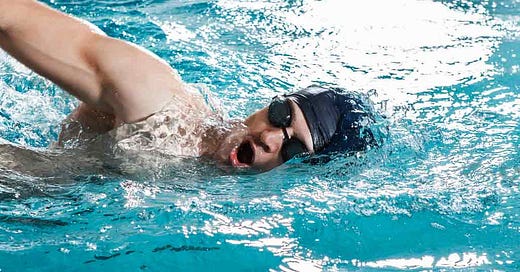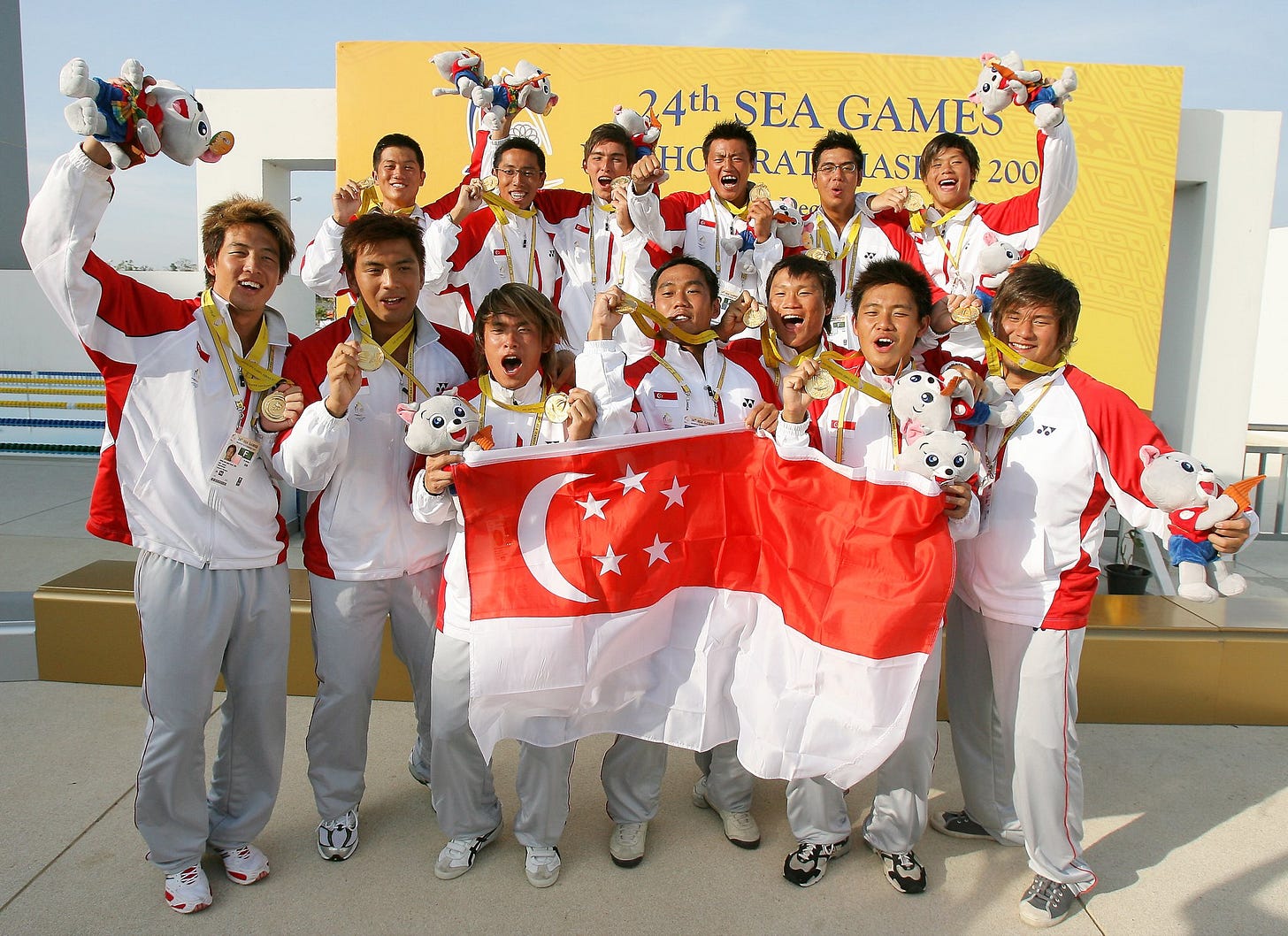From playing water polo
A few of you might know that I used to play water polo very actively more than a decade ago, during my teenage and young adult years for over 12 years.
I represented the Singapore National Team in water polo in the 2006 Commonwealth Water Polo Championships and the 2007 Southeast Asian Games, where we won our 22nd consecutive Team Gold.
Back then, I was probably one of the oldest players to ever make my senior debut at 24 years old. I was good but not talented, but I tried to make up for it by working very hard to compensate for my lack of talent.
To provide some background, water polo is a fast-paced, competitive team sport played in the water where the field is 30 metres by 20 metres. Each team had 13 players, and teams of 7, including one goalkeeper, would try to score goals by throwing a ball into the other team’s net.
The game lasts four 8-minute periods with unlimited player substitutions. Teams have a maximum of 30 seconds to score, which means players are constantly on the move, sprinting, passing, shooting and defending.

Water polo is similar to soccer in the pool, but players use their hands instead of their feet. It is also similar to rugby, where there is a lot of contact underwater and identical to basketball due to similar game tactics.
For context, Bleacher Report in 2016 and Business Insider in 2021 named water polo "the toughest sport in the world" based on six parameters: strength, endurance, speed, agility, skill, and physicality.
Back to Swimming
Water polo combines swimming, treading water, passing, and scoring. But at its foundation, it starts with swimming. Assuming all other skills are the same, if one or more players cannot swim fast enough, eventually, it will drag the team's performance through the game, as the other faster team will outswim and outscore the other.
There is a running joke that most swimmers who are good but not great often end up playing water polo because that's where they can do better. Of course, there are exceptions, but that was the case for me.
I started my water polo journey by swimming at 6-7 years old with weekly leisure sessions. I only started training more frequently from 12 years onward, which was very late. Despite a lot of hard work later on, I started too late. I was a relatively good swimmer but was not fast enough to win swimming medals in my age group.
Swimming and choosing the right game
There are four main styles of swimming: freestyle/front crawl, breaststroke, backstroke, and butterfly. I primarily swam long-distance freestyle events (200m, 400m, 1500m) and was poorer at other strokes. There was a reason why I swam long distances rather than short distances.

At my peak, at the age of 17-18, my 50-metre freestyle timings were in the low 28 seconds, placing me anywhere between 15th and 30th in my age group in Singapore. My 100-metre freestyle timings were in the low 58 seconds, placing me anywhere between 10th and 20th.
My 200-metre freestyle timing was around 2 minutes 40 seconds, placing me anywhere between 5th and 15th. My 400-metre freestyle timing was around 6 minutes, placing me anywhere between 5th and 10th. My 1500-metre freestyle timing was around sub 22 minutes, placing me anywhere between 4th and 6th.
As the distance increased, I had a higher chance of winning. Choose games where you can outcompete others, and you have a higher chance of winning.
There were a few reasons why I chose to compete and swim long distances instead. I had to decide to compete in an event where I had the highest chance of winning.
First, the fastest swimmers chose to compete in the shortest distances, the 50-metre and 100-metre events, which usually had the most participants. I had no way of getting into the finals of the top 8 fastest; I just wasn't fast enough.
Second, there would be fewer participants as the event's distance increased; very few swimmers wanted to swim long distances, and with this, I had less competition. All I needed was to endure more pain than others, and eventually, I would come on top.
Endurance for the long game of investing
To tie it back to the world of investing, Howard Marks says this best in his very first memo, in “The Route to Performance” in October 1999 of a pension manager:
“We have never had a year below the 47th percentile over that period or, until 1990, above the 27th percentile. As a result, we are in the fourth percentile for the fourteen year period as a whole.” - Source: Oaktree Capital
Like my approach to swimming, in investing, we do not aim to be the best, i.e., the top decile or percentile in any given year, by swinging for the fences and making bets that could cause us to lose all our capital.
Instead, we prefer to aim to be above average in consistency and durability for a long time, and eventually, we should come out on top after a long period of time.
That's the long-term investing game of endurance that we prefer to play.
27 July 2024 | Eugene Ng | Vision Capital Fund | eugene.ng@visioncapitalfund.co
Find out more about Vision Capital Fund.
You can read my prior Annual Letters for Vision Capital here. If you like to learn more about my new journey with Vision Capital Fund, please email me.
Follow me on Twitter/X @EugeneNg_VCap
Check out our book on Investing, “Vision Investing: How We Beat Wall Street & You Can, Too”. We truly believe the individual investor can beat the market over the long run. The book chronicles our entire investment approach. It explains why we invest the way we do, how we invest, what we look out for in the companies, where we find them, and when we invest in them. It is available for purchase via Amazon, currently available in two formats: Paperback and eBook.
Join my email list for more investing insights. Note that it tends to be ad hoc and infrequent, as we aim to write timeless, not timely, content.






